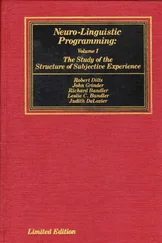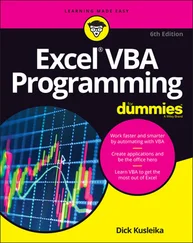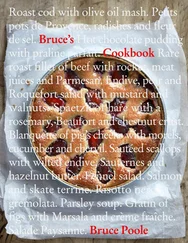D(T << endl << f << endl;)
D(T.setf(ios::scientific, ios::floatfield);)
D(T << endl << f << endl;)
D(T.setf(ios::fixed, ios::floatfield);)
D(T << f << endl;)
D(T.width(10);)
T << s << endl;
D(T.width(40);)
T << s << endl;
D(T.setf(ios::left, ios::adjustfield);)
D(T.width(40);)
T << s << endl;
} ///:~
This example uses a trick to create a trace file so that you can monitor what’s happening. The macro D(a)uses the preprocessor "stringizing" to turn ainto a string to display. Then it reiterates aso the statement is executed. The macro sends all the information to a file called T, which is the trace file. The output is: .
int i = 47;
float f = 2300114.414159;
T.setf(ios::unitbuf);
T.setf(ios::showbase);
T.setf(ios::uppercase | ios::showpos);
T << i << endl;
+47
T.setf(ios::hex, ios::basefield);
T << i << endl;
0X2F
T.setf(ios::oct, ios::basefield);
T << i << endl;
057
T.unsetf(ios::showbase);
T.setf(ios::dec, ios::basefield);
T.setf(ios::left, ios::adjustfield);
T.fill('0');
T << "fill char: " << T.fill() << endl;
fill char: 0
T.width(10);
+470000000
T.setf(ios::right, ios::adjustfield);
T.width(10);
0000000+47
T.setf(ios::internal, ios::adjustfield);
T.width(10);
+000000047
T << i << endl;
+47
T.unsetf(ios::showpos);
T.setf(ios::showpoint);
T << "prec = " << T.precision() << endl;
prec = 6
T.setf(ios::scientific, ios::floatfield);
T << endl << f << endl;
2.300114E+06
T.unsetf(ios::uppercase);
T << endl << f << endl;
2.300114e+06
T.setf(ios::fixed, ios::floatfield);
T << f << endl;
2300114.500000
T.precision(20);
T << "prec = " << T.precision() << endl;
prec = 20
T << endl << f << endl;
2300114.50000000000000000000
T.setf(ios::scientific, ios::floatfield);
T << endl << f << endl;
2.30011450000000000000e+06
T.setf(ios::fixed, ios::floatfield);
T << f << endl;
2300114.50000000000000000000
T.width(10);
Is there any more?
T.width(40);
0000000000000000000000Is there any more?
T.setf(ios::left, ios::adjustfield);
T.width(40);
Is there any more?0000000000000000000000
Studying this output should clarify your understanding of the iostream formatting member functions .
As you can see from the previous program, calling the member functions for stream formatting operations can get a bit tedious. To make things easier to read and write, a set of manipulators is supplied to duplicate the actions provided by the member functions. Manipulators are a convenience because you can insert them for their effect within a containing expression; you don’t have to create a separate function-call statement .
Manipulators change the state of the stream instead of (or in addition to) processing data. When you insert endlin an output expression, for example, it not only inserts a newline character, but it also flushes the stream (that is, puts out all pending characters that have been stored in the internal stream buffer but not yet output). You can also just flush a stream like this: .
cout << flush;
which causes a call to the flush( )member function, as in
cout.flush();
as a side effect (nothing is inserted into the stream). Additional basic manipulators will change the number base to oct(octal), dec(decimal) or hex(hexadecimal): .
cout << hex << "0x" << i << endl;
In this case, numeric output will continue in hexadecimal mode until you change it by inserting either decor octin the output stream.
There’s also a manipulator for extraction that "eats" white space: .
cin >> ws;
Manipulators with no arguments are provided in . These include dec, oct, and hex, which perform the same action as, respectively, setf(ios::dec, ios::basefield), setf(ios::oct, ios::basefield), and setf(ios::hex, ios::basefield), albeit more succinctly. The header also includes ws, endl, and flushand the additional set shown here: .
| Manipulator |
Effect |
| showbase noshowbase |
Indicate the numeric base ( dec, oct, or hex) when printing an integral value. The format used can be read by the C++ compiler. |
|
|
| showpos noshowpos |
Show plus sign (+) for positive values. |
|
|
| uppercase nouppercase |
Display uppercase A-F for hexadecimal values, and display E for scientific values. |
|
|
| showpoint noshowpoint |
Show decimal point and trailing zeros for floating-point values. |
|
|
| skipws noskipws |
Skip white space on input. |
|
|
| left right internal |
Left-align, pad on right. Right-align, pad on left. Fill between leading sign or base indicator and value. |
|
|
|
|
| scientific fixed |
Indicates the display preference for floating-point output (scientific notation vs. fixed-point decimal). |
|
|
Manipulators with arguments
There are six standard manipulators, such as setw( ), that take arguments. These are defined in the header file < iomanip>, and are summarized in the following table.
| Manipulator |
effect |
| setiosflags (fmtflags n) |
Equivalent to a call to setf(n). The setting remains in effect until the next change, such as ios::setf( ). |
| resetiosflags(fmtflags n) |
Clears only the format flags specified by n. The setting remains in effect until the next change, such as ios::unsetf( ). |
| setbase(base n) |
Changes base to n, where nis 10, 8, or 16. (Anything else results in 0.) If nis zero, output is base 10, but input uses the C conventions: 10 is 10, 010 is 8, and 0xf is 15. You might as well use dec, oct, and hexfor output. |
| setfill(char n) |
Changes the fill character to n, such as ios::fill( ). |
| setprecision(int n) |
Changes the precision to n, such as ios::precision( ). |
| setw(int n) |
Changes the field width to n, such as ios::width( ). |
If you’re doing a lot of formatting, you can see how using manipulators instead of calling stream member functions can clean up your code. As an example, here’s the program from the previous section rewritten to use the manipulators. (The D( )macro is removed to make it easier to read.) .
Читать дальше












